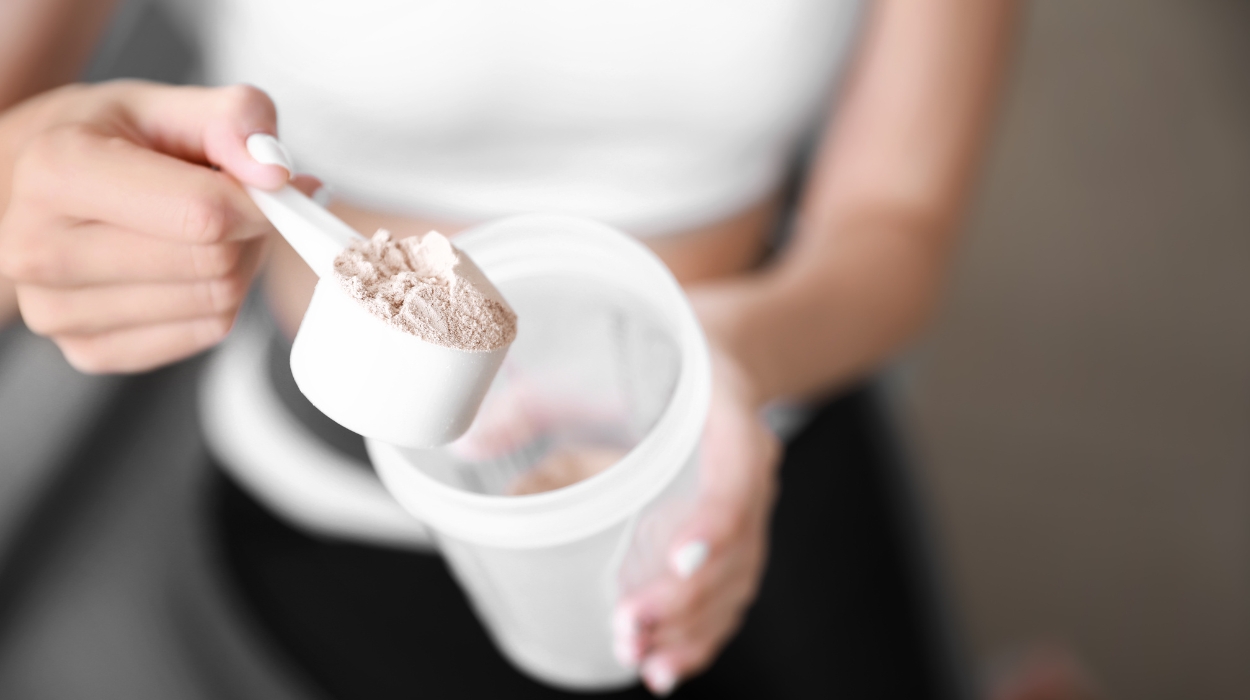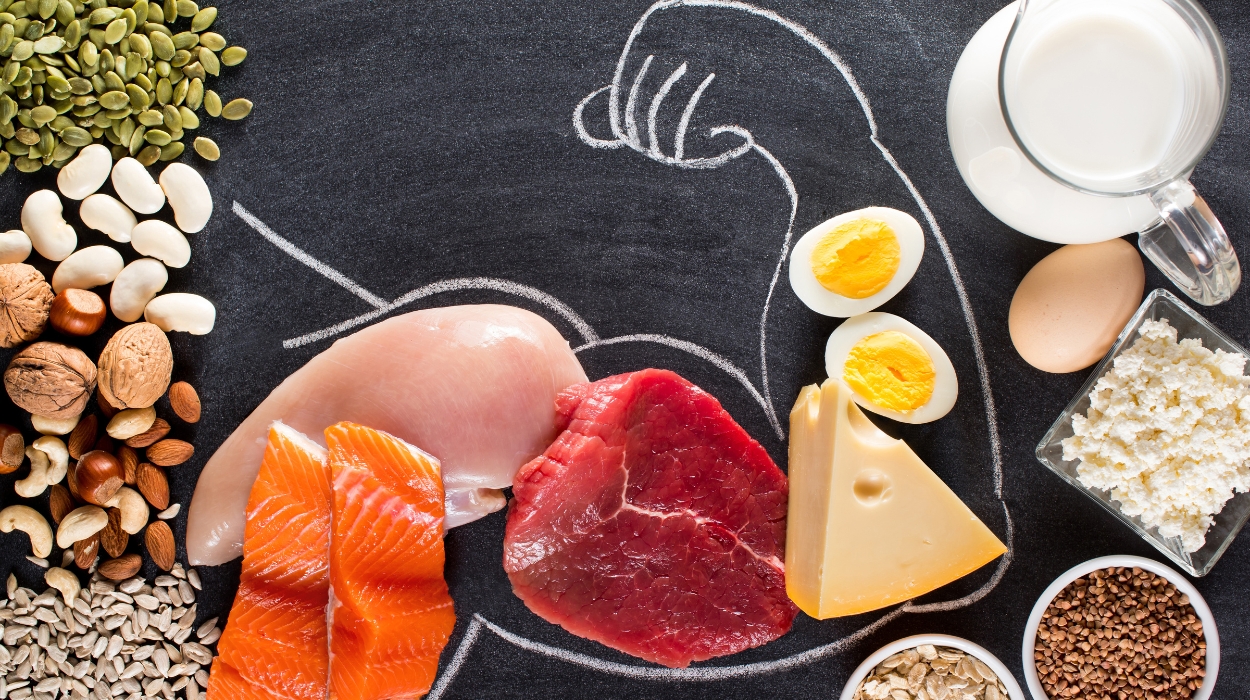 Expert's opinion
Expert's opinion
Expert's opinion
The article is a subjective view on this topic written by writers specializing in medical writing.
It may reflect on a personal journey surrounding struggles with an illness or medical condition, involve product comparisons, diet considerations, or other health-related opinions.
Although the view is entirely that of the writer, it is based on academic experiences and scientific research they have conducted; it is fact-checked by a team of degreed medical experts, and validated by sources attached to the article.
The numbers in parenthesis (1,2,3) will take you to clickable links to related scientific papers.
Anabolic Window: What Science Says In 2024? Is It Real?

Is protein intake immediately after exercise the best way to ensure that all of those amino acids end up in the right place? Anabolic trainers believe that eating or drinking a protein shake right after exercising is the surest way to accomplish this. Are they wrong?
Anabolic activity is still something of a mystery in the world of fitness—we know how it works, but its role in body composition is contested. There is plenty of evidence in favor of this fascinating topic.
What Is The Anabolic Window?
The post-exercise anabolic window, sometimes also called the metabolic window or the protein window is a muscle growth strategy[1] wherein the individual plans his or her calorie intake around every strength training and cardiovascular (cardio) workout.
The goal is to influence the trajectory of one’s body fat content, muscle size, and fat loss through nutrient timing. The brief period post-exercise is considered to be the best time to consume protein for muscle gain, but the actual claims about the underlying biological processes at play are disputed and often hotly debated.
Is it all bunk, or is there more to skeletal muscle hypertrophy than meets the eye?
Is The Anabolic Window Real? How Does It Work?

When you choose to eat only during your post-exercise period, the food that you eat is supposedly much more likely to be used to support optimal muscle growth, human muscle protein synthesis, and muscle repair.
While post-workout nutrient timing is one huge factor at play, promoting net muscle protein synthesis involves more than simply eating at the right time. The anabolic window of opportunity is best utilized with the right type of post-workout nutrition – that is, the ratio between each macronutrient that your post-workout meal includes is also extremely important when it comes to your results.
Net muscle protein balance and carb intake are both critical to the muscle mass that you gain, and anabolic theory suggests that this combination is maximized when taken at exactly the time that your body needs it.
In short: your system has everything it needs to facilitate the protein synthesis of the muscle fibers, and its excited state may compel it to do more than it would if the meal were simply taken at rest.
Some claim that the timing of every meal and snack is more relevant to muscle building than the caloric contents of each of the foods that you eat, but this is one of the most controversial aspects of anabolic window training.
After intense exercise, however, one’s glycogen stores may very well be depleted—under some circumstances, the impact of the anabolic window will be significant in terms of the muscular adaptations that result, but this won’t always be the case.
How Long Is The Anabolic Window?

The “exact” length of the anabolic window varies, depending on what you’re reading. However, most basic health publications agree on one thing: the anabolic window occurs after exercise.
Some refer to a 30-minute anabolic window as being the norm—others insist that it depends on the intensity and the duration of the activity that came before it. However, more important than the exact length of this window of opportunity will inevitably be the nature of the mechanism of action underlying the anabolic window. Namely, that of muscle anabolism.
What Is An Anabolic Response? How Does It Relate To Fitness And Health?
Muscle anabolism is one process through which your system can maintain[2] the skeletal muscle system, the other being catabolism.
Catabolism occurs when the rate of muscular degradation or atrophy exceeds the number of free nutrients available to repair muscle breakdown; without protein supplementation post-workout to initiate the anabolic protein response, your muscles have no choice but to break down muscle glycogen storage in place of the circulating amino acids that it would use otherwise.
On the other hand, anabolism takes advantage of your post-workout nutrient intake instead of muscle protein breakdown to refuel and rebuild muscle tissue after exercise.
It’s often said that anabolic training is best when one’s goal is to maximize lean muscle gains instead of reducing body weight, plain and simple. On the other hand, catabolic muscle glycogen resynthesis is more effective in reducing lean body mass outright, plain, and simple.
How To Achieve An Anabolic Post-Workout Response?
Scientific research studies suggest that consuming protein and carbohydrates in the right proportions and at the right times after exercising is the key to building muscle and replenishing your depleted glycogen stores.
The presence of glycogen in your system will impede the process—the glycogen is one link in a long chain of signaling pathways, and when the chain is broken, the anabolic process is compelled into motion.
Therefore, to enter anabolism, your muscles must be depleted. You also need to give it some work to do—muscle cell repair, in this case. Once these two conditions have been met, anabolic theory indicates that your system should naturally assume this enhanced state.
Let’s say you’re interested in taking advantage of anabolic protein timing. In theory, you could chug a protein shake immediately after participating in intense weight resistance exercise or cardio. If the post-workout anabolic window occurs in the first 30 minutes after exercise, your protein ingestion will hit your system at exactly the right time.[3]
What’s the best post-exercise protein dosage? Again, this will depend. Many sources recommend somewhere around 15 to 20 grams of high-quality, easily-digested protein, supplemented with the co-ingestion of around 30 grams of carbohydrates for optimal glycogen resynthesis. These figures may differ with weight, fitness levels, and activity intensity, but it’s a great place to start experimenting.
While we love protein shakes, whey protein, and protein powder to replenish our post-workout energy levels, you’re free to use any post-workout meal that you like. You need to ensure that what you’re eating contains the right ratio of protein and carbohydrate content combined for your muscles to recover completely. Both play key roles in protein breakdown and anabolic recovery in your muscles after your session.
Pre-Workout Nutrition
As much as 80%[4] of the energy we expend during exercise and resistance training comes from our glycogen stores. Is total protein intake before your training session relevant to sports nutrition?
Eating before resistance exercise is not the best way to train anabolically, but that doesn’t mean that carb or protein intake before working out is always the wrong thing to do.
Some studies on nutrient timing speak very positively to the benefits of adequate carbohydrate intake before resistance training—primarily, the way that the right pre-workout meal tends to improve athletic performance[5] overall during resistance exercise. Again, these findings qualify this with the caveat that exercise intensity and the timing and constitution of the meal that you eat.
Fasted exercise is another popular notion in fitness.[6] Still, some research finds the validity of fasted training in terms of muscle tissue hypertrophy, gained muscle strength, and body composition outcomes to be spotty at best.
Final Thought
The world of sports nutrition is full of drama. Try anabolic training out for yourself and see where it takes you. Who knows? Your results may end up converting you into a true believer.
In any case, we always recommend listening to what your system is telling you, as well as the advice of your doctor or personal trainer. There are a million different ways to spin your workout—the anabolic window isn’t right for everybody, but it may very well be the answer for you.
+ 6 sources
Health Canal avoids using tertiary references. We have strict sourcing guidelines and rely on peer-reviewed studies, academic researches from medical associations and institutions. To ensure the accuracy of articles in Health Canal, you can read more about the editorial process here
- Aragon, A.A. and Schöenfeld, B.J. (2013). Nutrient timing revisited: is there a post-exercise anabolic window? Journal of the International Society of Sports Nutrition, [online] 10(1). doi:https://doi.org/10.1186/1550-2783-10-5.
- McCarthy, J.J. and Esser, K.A. (2010). Anabolic and catabolic pathways regulating skeletal muscle mass. Current Opinion in Clinical Nutrition and Metabolic Care, [online] 13(3), pp.230–235. doi:https://doi.org/10.1097/mco.0b013e32833781b5.
- Kerksick, C.M., Arent, S.M., Schöenfeld, B.J., Stout, J.R., Campbell, B., Wilborn, C., Taylor, L., Kalman, D., Smith‐Ryan, A.E., Kreider, R.B., Willoughby, D.S., Arciero, P.J., VanDusseldorp, T.A., Ormsbee, M.J., Wildman, R., Greenwood, M., Ziegenfuss, T.N., Aragon, A.A. and José António (2008). International Society of Sports Nutrition position stand: Nutrient timing. Journal of the International Society of Sports Nutrition, [online] 5(1). doi:https://doi.org/10.1186/1550-2783-5-17.
- Charles Paul Lambert and Flynn, M.G. (2002). Fatigue during High-Intensity Intermittent Exercise. Sports Medicine, [online] 32(8), pp.511–522. doi:https://doi.org/10.2165/00007256-200232080-00003.
- Rothschild, J., Kilding, A.E. and Plews, D.J. (2020). What Should I Eat before Exercise? Pre-Exercise Nutrition and the Response to Endurance Exercise: Current Prospective and Future Directions. Nutrients, [online] 12(11), pp.3473–3473. doi:https://doi.org/10.3390/nu12113473.
- Schöenfeld, B.J., Aragon, A.A., Wilborn, C., Krieger, J. and Gül Tiryaki Sönmez (2014). Body composition changes associated with fasted versus non-fasted aerobic exercise. Journal of the International Society of Sports Nutrition, [online] 11(1). doi:https://doi.org/10.1186/s12970-014-0054-7.



